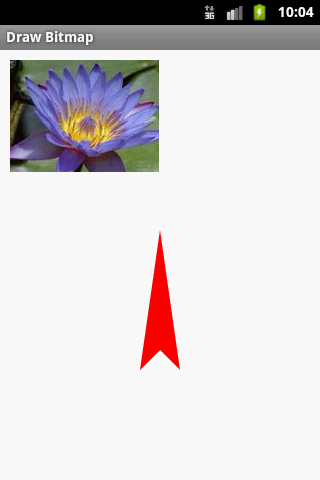double in Java example for Android development
Java double is 64 bit double precision type used when fractional
precision calculation is required.
Java double je datový typ (reálné číslo) o velikosti 64 bitů. Používá se například pro přesný výsledek po dělení za desetinnou tečkou. Pokud nepotřebuje tak veliké číslo použijte raději typ float, šetříte tím paměť mobilního telefonu.
precision calculation is required.
Java double je datový typ (reálné číslo) o velikosti 64 bitů. Používá se například pro přesný výsledek po dělení za desetinnou tečkou. Pokud nepotřebuje tak veliké číslo použijte raději typ float, šetříte tím paměť mobilního telefonu.
// declaration and assignment of value type double
double x = 18.41785;
//print formated value
System.out.printf("The value of x is %.3f%n", x); // 18.418
// declaring more variables in single statement
double d1 = 12.4, d2 = 564.5, d3 = 14.589;
// double range of value
System.out.println(Double.MIN_VALUE); // 4.9E-324
System.out.println(Double.MAX_VALUE); // 1.7976931348623157E308
// is NaN Not-a-Number
double f = (double) Math.sqrt(-15);
boolean bNaN = Double.isNaN(f);
System.out.print(bNaN); // true
// check if a string is a valid number in Java example
// convert string to double Java example
String sD = "12.8";
double dParse = Double.parseDouble(sD);
// convert strings to numbers
String sDl = "15.48";
double dFromString = (Double.valueOf(sDl)).doubleValue();
// format double, float or long value to string
DecimalFormat formatter = new DecimalFormat(".##");
String s = formatter.format(-.5678); // -0.57
// .### -0.568
// .#### -0.5678
// .000000 -.567800
// -123.456
// .## -123.46
// #.## -123.46
// #E0 -.1E3
// ##E0 -1.2E2
//###E0 -123E0
// double to string in Java example code
Double dObj = new Double(68.5);
String str = dObj.toString();
// else
Double dS = 11.6;
String sdouble = dS.toString();
// compare two double variables
Double dComp1 = 4.3;
if(dComp1.equals(4.3))
System.out.print("true");
// compares the two specified double values in Java example
// int i = compare(double d1, double d2);
int i = Double.compare(11.5, 11.7); // -1 first < second
// 0 first == second
// 1 first > second
System.out.print(i);
396LW NO topic_id
AD
Další témata ....(Topics)
Try each step separately:
- Restart Eclipse
- Clean project and rebuild
- Create a new project and try it if the problem persists, if no move copy project to other folder, delete project from workspace , create new project same name and copy java, xml etc. files to new project
- Close Eclipse, backup folder c:\Users\myName\workspace\.metadata and delete it. Restart Eclipse try again import project to workspace
- Re-installing the Android Developer Tools
- Re-installing Eclipse - rename old folder with Android to Android_old, create new folder C:\Program Files\Android and copy new Eclipse with sdk into new folder
- Created a new project importing from the file system
- Created a new project from subversion
Download file from Android device using Android Studio
stackoverflow.com/questions/34603355/android-device-monitor-data-folder-is-empty- android.com/studio Start Android Studio
- Root device by Your Android model. This example is for 4.4 kingoapp.com/root-tutorials/how-to-root-android-4.4.htm
- Open command prompt console: Start -> Command prompt
- Write path to ADB plus command, and set chmod for every folder on path to apliccations database, for example: (user is Your name|nick!!!! shell@Kraft-A6000:/ is Your device, this is Lenovo A6000, may be different!!!!)
- Every dot is one line in Command prompt console!!!!! Dont write (press Enter) or (Enter). Dont brake line between root@Kraft-A6000:/ # and (Enter)!
C:\Users\user>c:\Users\user\AppData\Local\Android\sdk\platform-tools\adb shell (press Enter)
shell@Kraft-A6000:/ $
shell@Kraft-A6000:/ $ su (Enter)
root@Kraft-A6000:/ #
root@Kraft-A6000:/ # su -c "chmod 777 /data" (Enter)
root@Kraft-A6000:/ # su -c "chmod 777 /data/data" (Enter)
root@Kraft-A6000:/ # su -c "chmod 777 /data/data/com.your_package" (Enter)
root@Kraft-A6000:/ # su -c "chmod 777 /data/data/com.your_package/databases" (Enter)
root@Kraft-A6000:/ # su -c "chmod 777 /data/data/com.your_package/databases/database_name.db" (Enter)
- Open Android Studio -> Tools -> Android -> Android Device Monitor (meybe some message box, minimalize all windows to find message box - close message box )
- Pull data from Explorer
Date: 13.07.2020 - 08:23
// image from res/drawable
int resID = getResources().getIdentifier("my_image",
"drawable", getPackageName());
// view
int resID = getResources().getIdentifier("my_resource",
"id", getPackageName());
// string
int resID = getResources().getIdentifier("my_string",
"string", getPackageName());
// single line
/*
multi line
*/
drawPath, canvas.rotate, lineTo basic Android example for your testing.

|
|

|
|
// //www.apache.org/licenses/LICENSE-2.0
// The Android Open Source Project
public class MainActivity extends Activity {
@Override
protected void onCreate(Bundle savedInstanceState) {
super.onCreate(savedInstanceState);
setContentView(new SampleView(this));
}
private static class SampleView extends View {
private Paint mPaint = new Paint();
private Path mPath = new Path();
// CONSTRUCTOR
public SampleView(Context context) {
super(context);
setFocusable(true);
// Construct a wedge-shaped path
mPath.moveTo(0, -60);
mPath.lineTo(-20, 80);
mPath.lineTo(0, 60);
mPath.lineTo(20, 80);
mPath.close();
}
@Override
protected void onDraw(Canvas canvas) {
Paint paint = mPaint;
canvas.drawColor(Color.WHITE);
paint.setAntiAlias(true);
paint.setColor(Color.RED);
paint.setStyle(Paint.Style.FILL);
Bitmap bitmapOrg = BitmapFactory.decodeResource(getResources(),
R.drawable.flower_blue);
canvas.drawBitmap(bitmapOrg, 10, 10, paint);
int w = canvas.getWidth();
int h = canvas.getHeight();
int cx = w / 2;
int cy = h / 2;
canvas.translate(cx, cy);
// uncomment next line
//canvas.rotate(90.0f);
canvas.drawPath(mPath, mPaint);
}
}
}
Editace: 2011-09-26 20:49:42
Počet článků v kategorii: 396
Url:double-in-java-example-for-android-development



